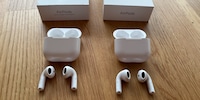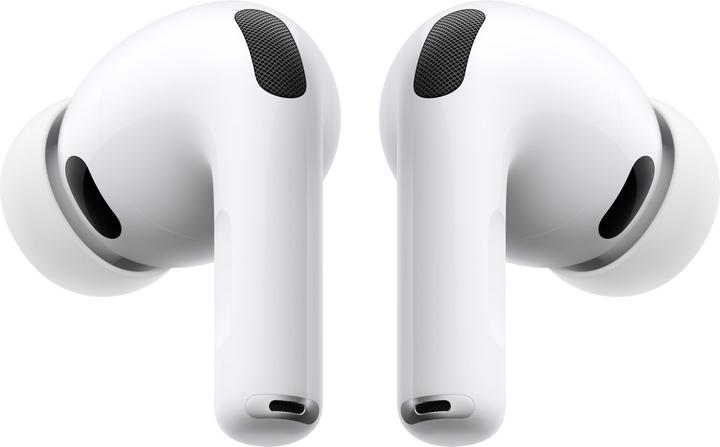

Apple AirPods Pro 3: new features, new look, new bass
The AirPods Pro 3 deliver more bass, better ANC and new features including heart rate monitoring and live translation – a worthwhile upgrade.
Three years after the last official launch, Apple’s releasing the third version of its premium in-ear series – and it’s a big deal. The aim wasn’t just to update the product: besides improved ANC, optimised sound and a new look, there are functional extras such as heart rate monitoring and live translation. And Apple was right to take three years – the update’s worth it.
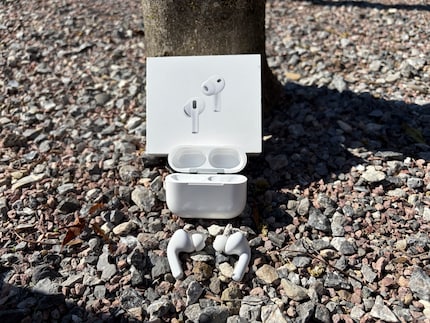
Apple tweaks the bass and «sennheisers» the sound signature
The core function of headphones is and remains listening to music. And Apple’s put a lot of effort into it. The previous model’s already decent – if you use them with an iPhone, at least. Apple’s AirPods Pro 3 deliver dynamic, energetic sound with pronounced highs and rich bass. The mid-range drops slightly, which may be less than ideal for certain genres, but it’s hardly noticeable for most users. Powerful noise cancellation and new ear tips also ensure clean, detailed playback.
The sharpness of the guitar sounds is particularly clear in Sultans of Swing by Dire Straits. The AirPods Pro 3 allow every little nuance to shine through, although it almost sounds a bit too sharp at high volumes. The high frequencies are generally really clear and present, sometimes even dominant. With acoustic instruments or detailed recordings, the highs seem bright, but they can sound a bit harsh. If you’re looking for a neutral sound, this emphasis might be a concern. However, for many musical styles – especially pop, electronic music, or hip-hop – it works perfectly.
On a John Mayer track, I noticed that while the vocals stand out clearly, they don’t sound quite as warm and roomy as they would on headphones with a stronger mid-range emphasis. This makes the song sound a bit plainer, even though all the details are there. The mids are recognisable, but they sound quite restrained compared to the highs and bass. Vocals come through in most cases, but warmth and body are sometimes lacking in very complex tracks. This makes the AirPods Pro 3 sound more analytical and modern, rather than particularly full or warm – which is somewhat reminiscent of Sennheiser’s sober sound.
The bass line on this track’s reproduced very accurately. The beat sounds rich and driving, the kick drum’s punchy without overpowering the rest. The new bass performance is particularly noticeable in electronic music. The bass range has improved noticeably compared to previous models. It’s powerful and stays stable even at higher volumes. Low frequencies are reproduced cleanly with no booming. But it might be a bit too much for some. When you listen to bass-heavy music, it’s clear Apple’s worked on tuning the sound. While the deep bass doesn’t compare to large over-ear headphones, the performance is remarkable for an in-ear product. This raises questions: when it comes to codecs, Apple’s sticking with SBC and AAC, shunning lossless codecs.
Noise cancellation: «twice as powerful»
The active noise cancellation has been significantly enhanced and filters out ambient noise almost completely. On buses, trains and planes in particular, I can’t hear anything at all. Apple emphasises that the ANC’s «twice as powerful» as its predecessors, without providing any technical specifications. I’m inclined to believe it.
In Transparency mode, outside noise is selectively allowed in and the adaptive control automatically adjusts to your situation – when you start speaking, for example. Transparency mode in particular feels different from some competitor models. While outside noise is also picked up by microphones, the volume isn’t artificially boosted.
Apple’s subtle redesign
I always question how comfortable in-ear headphones are. It’s something that (for me) was a disappointing element of the Sony WF-1000 XM5, for example. Apple’s been cautious about making changes to AirPods. The new earbuds are a mix of silicone and foam. They adapt easily to the ear canal and seal better than before. However, the angle’s now slightly different and no longer as straight as the Pro 2. It took some getting used to, but now I don’t even notice it any more.
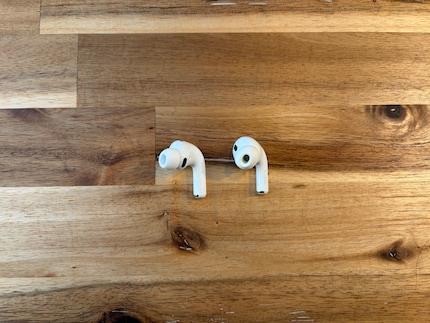
For the first time, Apple’s offering five different ear tip sizes – from extra small to extra large. It doesn’t look like Cupertino wanted to take any risks. They’re comfortable to wear, even for extended periods. Small vents prevent any unpleasant pressure, and they stay securely in your ears during exercise and physical activity. With IP57 certification, the AirPods Pro 3 are dust-resistant and will work even if they fall into a puddle – so, that’s one less excuse for not going for a run.
Battery: Apple’s got its finger on the pulse
Battery life’s one of the biggest improvements. With noise cancellation enabled, the earbuds last a good eight hours – about a third longer than their predecessors. Without ANC, it’s even longer. The charging case provides around three additional charge cycles, allowing you to go several days without needing a power outlet. You charge the case via USB-C or wirelessly. A quick charge mode ensures that just five minutes in the case is enough for about an hour of playback. Conveniently, you can also use an Apple Watch power supply.
¿Habla español? No, pero lo entiendo.
One of the most exciting new features is Live Translation. Spoken language can be translated into five other tongues in real time and whispered into your ear through your AirPods. However, you need an iPhone 15 Pro or later and Apple’s Translate app. To activate the feature – which is disabled by default – press and hold both AirPod stems, wait for the beep and off you go.
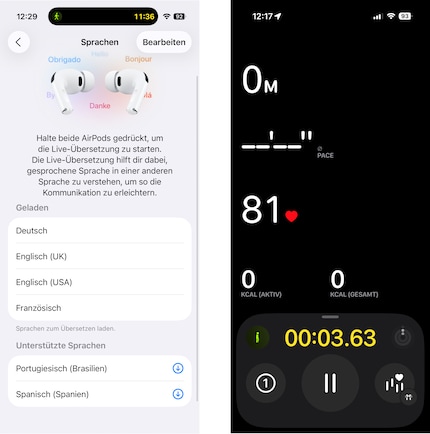
I still encountered a few minor quirks: the software sometimes struggles if someone speaks quickly or with a strong accent. The audio translation sometimes takes two or three seconds. This is a bit too long to have a truly real-time conversation, although Apple clearly describes the addition as «beta». Nevertheless, this feature’s practical for simple conversations while travelling and offers cool added value overall. The built-in heart rate sensor’s also new. It measures your heart rate via small sensors in your ear. During moderate activity, it delivers fairly realistic readings, providing Apple’s fitness apps with additional data. During vigorous activity, the accuracy fluctuates a bit, but it’s generally quite useful.
In a nutshell
An all-round strong upgrade
The AirPods Pro 3 are a significant upgrade from their predecessors. Unlike annual upgrades, the improvements are noticeable and the new features are pretty cool. Live Translation in particular is fun to use, even if there’s still room for improvement. Combined with the improved ANC and longer battery life, Apple’s managed to create a strong new device.
The AirPods Pro 3 are a logical choice for iPhone users who like the sound signature. Android users, however, will unfortunately have to do without some features. Sound-wise, I think their strengths are powerful bass and brilliant highs – but anyone preferring warm mids won’t be completely satisfied. Overall, they’re a well-rounded package.
Pro
- Excellent noise cancellation
- Long-lasting battery
- Cool translation feature
Contra
- Only AAC/SBC codecs
- Mids lack warmth and impact

I've been tinkering with digital networks ever since I found out how to activate both telephone channels on the ISDN card for greater bandwidth. As for the analogue variety, I've been doing that since I learned to talk. Though Winterthur is my adoptive home city, my heart still bleeds red and blue.
